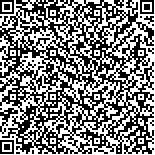李江,李如一,王琛涵,张茹,张永祥,高思山,王强.A型肉毒毒素与酒精局部注射治疗脑卒中后下肢肌痉挛的对比研究[J].中华物理医学与康复杂志,2016,38(7):504-508
扫码阅读全文

|
| A型肉毒毒素与酒精局部注射治疗脑卒中后下肢肌痉挛的对比研究 |
|
| |
| DOI: |
| 中文关键词: 肉毒毒素,A型 乙醇 脑卒中 下肢痉挛 神经肌肉阻滞 |
| 英文关键词: Botulinum toxin, type A Ethyl alcohol Stroke Lower limb spasticity Neuromuscular blockade |
| 基金项目:山东省科技厅重点研发项目(2012YD18031) |
|
| 摘要点击次数: 3872 |
| 全文下载次数: 5853 |
| 中文摘要: |
| 目的对比观察A型肉毒毒素(BTXA)和50%酒精(EA)神经肌肉阻滞对改善脑卒中后下肢中枢性肌痉挛的效果。 方法采用随机病例对照研究的方法,选取符合入选标准并完成本研究的伴有足下垂和内翻的脑卒中患者92例,按连续入院先后顺序,按随机数字表法分为A型肉毒毒素(BTXA)组和酒精(EA)组,选择患侧腓肠肌、比目鱼肌和胫后肌作为靶肌肉,分别行局部肌肉注射治疗。BTXA组(48例),给予浓度为50U/ml的BTXA,每块肌肉注射位点1~4个,注射量50~200U,一次总剂量<600U;EA组(44例)给予50%酒精注射,总量<10ml(每个注射位点0.1~0.5ml)。分别于注射前及注射后2、4和12周由专人进行改良Ashworth分级(MAS)、3m起立-行走计时测试(TUG)、10m步行测定(10m-WT)及步态功能视觉类比评定(VAS-GF);并全程监测患者注射药物后的不良反应。 结果①注射后2周,2组患者的MAS较组内注射前有明显改善(P<0.05),BTXA组与EA组比较,组间差异亦有统计学意义(P<0.05),EA组改善更明显;但2组在10m-WT、TUG和VAS-GF方面的变化不明显,组间差异无统计学意义(P>0.05)。②注射后4周,BTXA组患者的MAS评分与组内注射前及注射后2周比较,差异均有统计学意义(P<0.05),EA组的MAS评分较组内注射前差异无统计学意义(P>0.05),但2组间差异有统计学意义(P<0.05);2组患者的TUG、10m-WT和VAS-GF均较组内注射前有明显提高(P<0.05)。③注射后12周,BTXA组患者的MAS、TUG、10m-WT和VAS-GF与组内注射前比较,差异均有统计学意义(P<0.05),EA组的VAS-GF较组内注射前有明显改善(P<0.05),而10m-WT和TUG较组内注射前并无明显改善,差异无统计学意义(P>0.05),但2组间比较差异有统计学意义(P<0.05)。④EA组有11例出现注射区域疼痛,持续时间10~20d好转。 结论BTXA和EA局部注射均可缓解肌痉挛,且1天至2周起效,前者较后者的不良反应小、持续时间长,临床上可根据情况选择性应用。 |
| 英文摘要: |
| Objective To compare the effectiveness of botulinum toxin type A (BTXA) and ethyl alcohol (EA) in treating lower extremity spasticity after stroke. MethodsThis was a randomized, case-control study. A total of 92 eligible stroke survivors completed the study. They were randomly divided into a BTXA group of 48 and an EA group of 44 according to a random number table. The gastrocnemius, soleus and posterior tibial muscles of the affected limb were chosen as injection sites. The BTXA group was injected with 50 to 200 IU of BTXA (at 50 U/ml) at one to four sites in each muscle, with a total injection dose of less than 600 U. The EA group was injected with less than 10 ml of 50% EA (0.1 to 0.5 ml at each site). Before and 2, 4 and 12 weeks after the injection, both groups were evaluated using the modified Ashworth scale (MAS), a 3 m timed up and go test (TUG), a timed 10 meter walk (10m-WT) and each was asked to assess their pain level using a visual analogue scale (VAS). Any adverse reactions were also observed. ResultsTwo weeks after the injection, the average MAS score of both groups had improved significantly compared to that before the injection. The average improvement in the BTXA group was significantly less than in the EA group. No significant differences were found in other measurements. After four weeks the average MAS score of the BTXA group was still significantly different from that before injection or from 2 weeks previously, but the EA group now showed no significant difference from before the injection. The average TUG, 10m-WT and VAS scores of both groups had improved significantly compared to those of the earlier time points. Twelve weeks after the injection, the average MAS, TUG, 10m-WT and VAS scores of the BTXA were still significantly improved compared to before the injection, but in the EA group only the average score VAS reading was significantly improved. There were then significant differences between the two groups in all of the measurements. ConclusionsBoth BTXA and EA can relieve muscle spasticity. Both take effect within 2 weeks, but the former has fewer side effects than the latter and a longer duration of therapeutic effect. |
|
查看全文
查看/发表评论 下载PDF阅读器 |
| 关闭 |
|
|
|